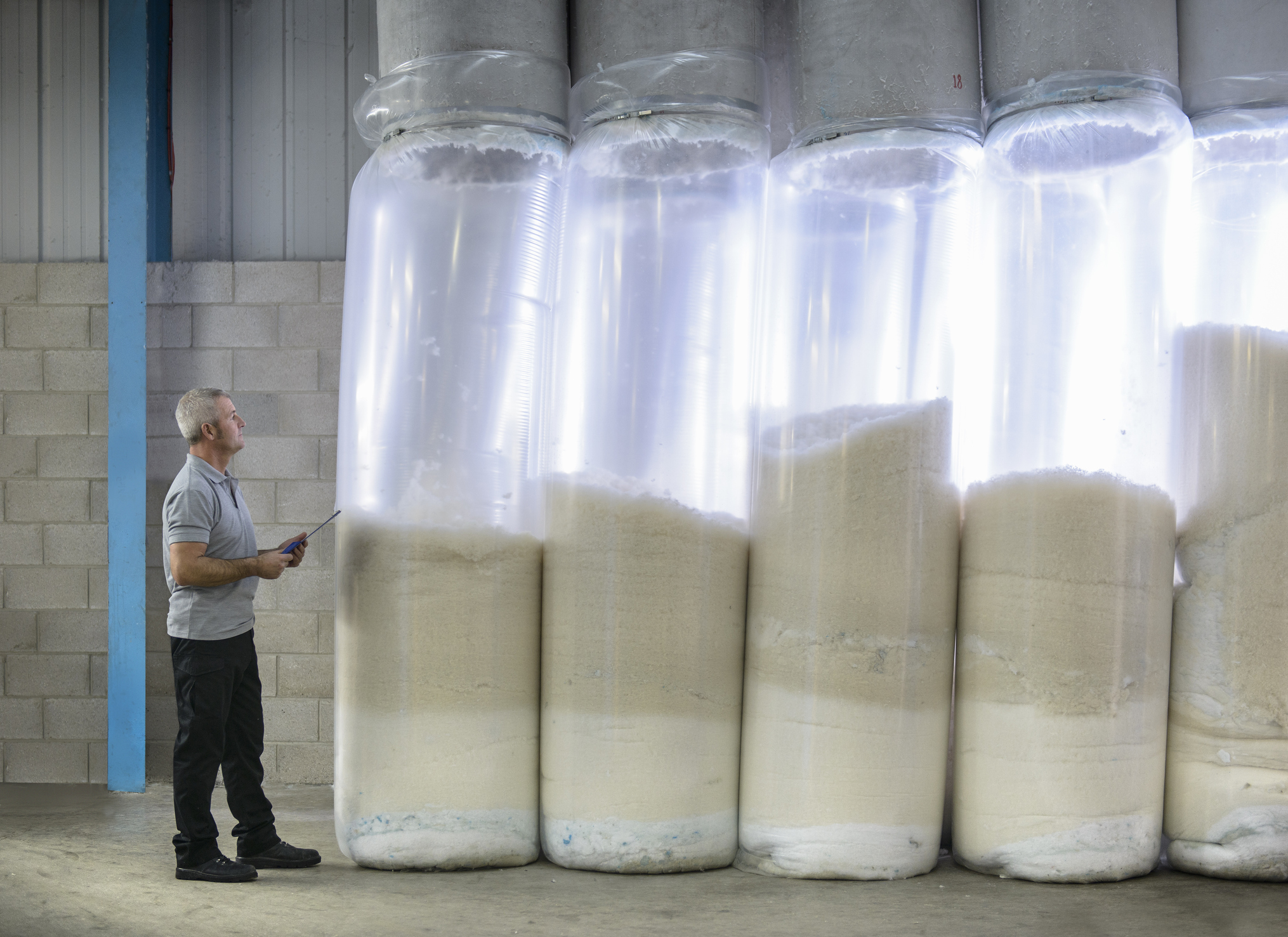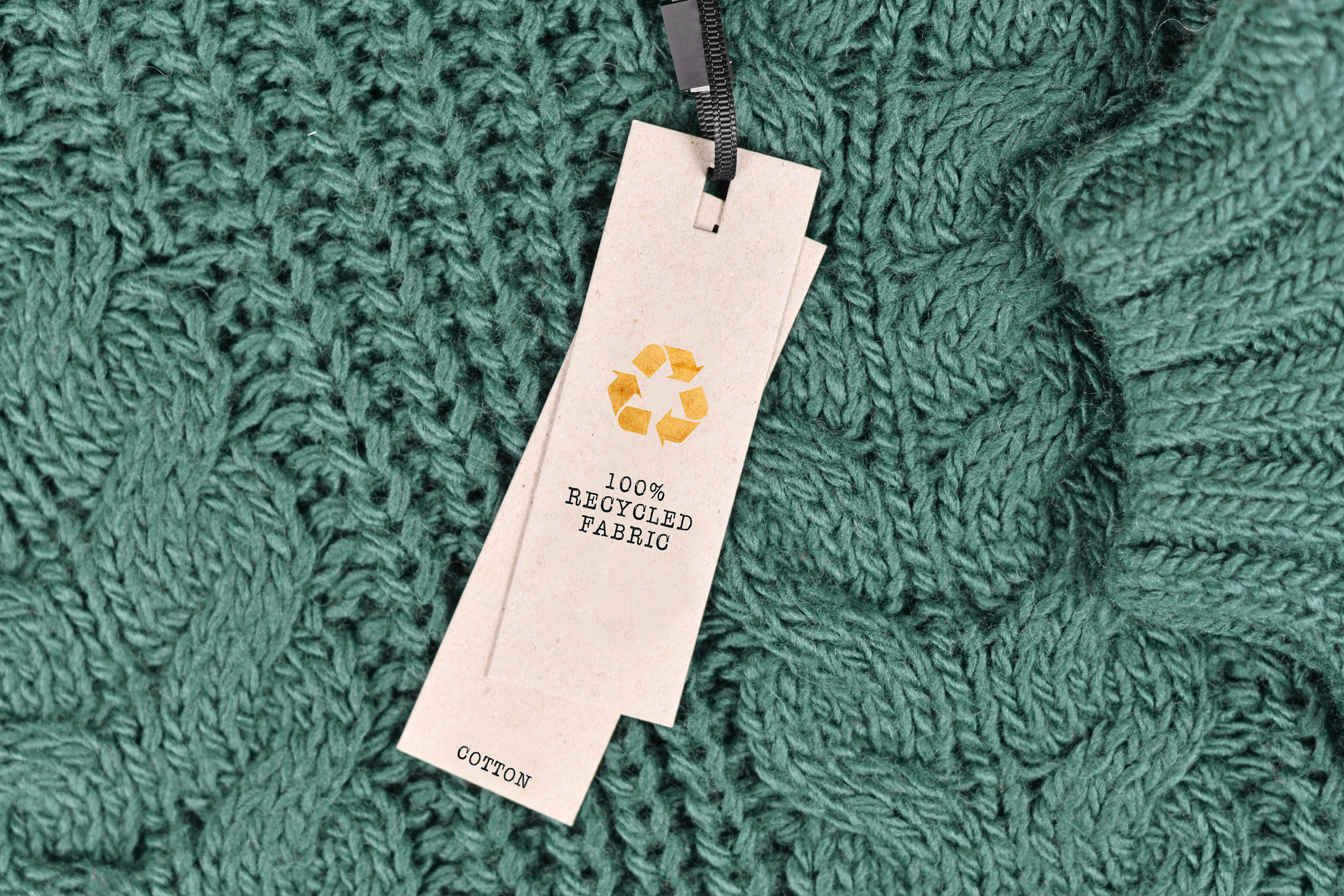The Shifting Sands of Sustainability: Part One
The environmental impact of waste from apparel and textiles is leading to an increasing number of legislative efforts and demand for change.
Everybody is talking about it in the apparel industry: the massive environmental impact of textile waste. As it stands currently, you’d be hard-pressed to find a shop, manufacturer, or any business in the industry that hasn’t at least had the “sustainability talk” with employees, co-workers, customers, or even peers. At first, it was a small whisper, but what was once just a passing conversation is now a loud, alarming bell.
And if you think your business can ignore it, think again.
Behind the loud drumbeat are real numbers — numbers that indicate a problem:
- The world produces 92 million tons of textile waste every year.
- Clothing and textiles currently make up at least 7% of the total amount of waste in global landfill space.
- Only 1% of clothes will get recycled into new garments.1
That data should be enough to convince anyone working within the apparel space, whether in fashion, decorating, manufacturing, retail, or otherwise, that there is a need for change. But if that isn’t enough to compel you to take action, you should know that there’s been a recent wave of legislation and laws being implemented globally that will force change.
Like it or not, the call for sustainable action is happening, and for those working within the decorated apparel community, this will affect your business — if it hasn’t already. But it’s not all doom and gloom. Utilizing current resources and leveraging the advice of experts who are working in the trenches, decorators don’t need to fear change. In fact, your shop can get on board and reap the benefits of being eco-friendly.
A Brief Look at Legislation
Let’s dissect just some of the legislation that is already in the mix in the United States. Understanding the world of regulations is crucial for apparel decorators, even when certain legislation doesn’t pass.
“There are several reasons why tracking and understanding all the proposed and final legislation addressing sustainability is crucial,” believes Gary Jones, vice president, environmental, health, and safety affairs for PRINTING United Alliance. Legislation impacts an apparel decorating business in many ways, from reporting and sourcing to making physical changes to their shop.
“For example,” says Jones, “the recent legislation passed last year in California requires companies that are claiming they are offsetting their greenhouse gas emissions, aka carbon footprint, to post information on their web page describing how they are achieving it and which companies they are working with to offset their emissions.” Those affected by this law have likely already begun making changes; those not affected by it should keep an eye out as similar laws could be making their way into respective states and even cities.
But there’s more. “Some of the legislation directed at ‘toxic’ chemicals such as inadvertent PCBs in some pigments, carbon black, mineral oil, per- and polyfluoroalkyl substances (PFAS) along with other chemicals can cause tremendous problems with the ability of ink manufacturers to formulate inks,” Jones states. “In turn, printing operations will not be able to produce the products requested by their customers. While many of these bans on toxic chemicals are occurring at the state level, as more states put them in place, they in essence become a national ban.” Even though many of these laws have failed, it’s creating noise.
There’s also been a lot of noise in the extended producer responsibility (EPR) arena. “Any new laws like EPR would greatly affect the printing industry,” believes Ryan Schraffenberger, owner of Promotions Guy and sustainability advocate. In a nutshell, EPR is a policy or regulation that assigns producers the responsibility for the end-of-life of products. This can include both financial responsibility and operational responsibility, though the amount and type may differ.
For those shops thinking they don’t fall under this category, think again. In some situations, depending on wording of a particular EPR proposal, decorators could be defined as “producers.” “If we as printers are required to manage the end-of-life use of our products or packaging, it will simply make everything a lot more expensive,” Schraffenberger points out.
Then there are all of the other sustainably focused regulations, such as those affecting human rights and the supply chain. “There really is a broad spectrum to the current realm of announced regulatory changes that will impact our industry,” explains Garry Bell, Chasing Better Consultants Inc. and consultant to the U.S. Cotton Trust Protocol. “Some are focused on forced labor, some are focused on the environmental safety of inputs into the products, while many are really focused to make sure consumers are not misled by what is presented to them.”
Examples of United States Legislation
Editor’s Note: This is not a complete list of laws and legislation that are currently in effect in the U.S.
SB253 and SB261 – California
- Requires certain businesses to provide their scope 1 and scope 2 greenhouse gas emissions (on or before Jan. 1, 2025)
AB-1817 – California
- Prohibits the manufacture, distribution, sale, or offer of textile articles containing regulated perfluoroalkyl and polyfluoroalkyl (PFAS) chemicals
Senate Bill S6291A – New York
- Prohibits the use of PFAS in production of clothing and textiles within New York State
Public Law 2023, c. 138 – Maine
- Bans the intentional addition of PFAS chemicals (will be phased in over the next several years)
Solid Waste Master Plan – Massachusetts
- Textiles, along with mattresses, are no longer allowed to be put in landfills in Massachusetts
The pressure to change isn’t just coming from the government. More and more, consumers are joining the conversation, and they’re doing it in a loud way.
“We are also experiencing a demographic shift in the population,” says Jones. “Those that are part of Generation Z or Zoomers, born between mid-to-late 1990s and the early 2010s, are playing a larger role in society as they mature and become part of the consuming public and workforce. While there has been a lot written about this demographic, one key aspect is that they have internalized their concern for the environment and are making purchasing and career decisions based on their commitment to protecting the environment.”
Reality Check
Change is good, and in this case, change is needed, but making that a reality is easier said than done. On paper, a lot of these regulations and proposals sound great, but implementing them is another story.
“In many instances, legislation is well-intended, but experience has shown that well-intended legislation does not necessarily solve the problem it is intended to address,” Jones believes. “What is concerning with the new legislation is that in many instances it does not work or fix the problem. Because initial legislation is usually not carefully crafted … we will see additional legislation designed to address the problem that the initial one created.”
He points to EPR laws as an example.

“EPR legislation is designed to increase the recycling rates for covered packaging by charging a fee on the producer or those placing the product into the market. However, the EPR fees are only being used to subsidize the collection of materials, not the actual recycling of them as no funding is directed toward building the infrastructure necessary to process the materials being collected. In addition, the funding also is used to pay for a new bureaucracy designed to manage the program and reimburse the state for their time and resources.”
In that sense, what we need to realize is that many of these rules and regulations are still in their infancy, says Bell. “We need to say that many of these initiatives are in development/testing/pilot mode and will undoubtedly be altered to make them more realistic and achievable possibly with phased-in requirements,” he states. “The European Digital Product Passport is a good example of an initiative that is generating a huge amount of attention, but the next draft of the regulations is only expected in 2025, with first trials in 2027 and initial targeted implementation date of 2030. I am certain that what we end up with as actual regulation in 2030 will be very different than what will be proposed in 2025.”
Real Changes Decorators Can Make
Not only can the current and potential effects feel overwhelming, it’s also easy to get hooked on the negative implications of everything. But what many experts caution decorators to keep in mind is a) these changes don’t happen overnight; and b) there are plenty of resources available to help.
“While the textile and apparel industry may be feeling like some of these new requirements are very exhaustive and challenging, it’s important to acknowledge that other industries (pharma, food, electronics) are already meeting many of these burdens,” says Bell. “Our industry has historically been largely unregulated and lightly scrutinized in the past. We are seeing, as well, the confluence of increased digitization of commerce, enhanced traceability technology solutions, and whether we like it or not, a new generation of consumers that are increasingly not accepting the former status quo.”
Realistically, there will be (and already are) challenges surrounding this, as pointed out by Jones. Higher costs associated with making changes to the physical footprint of a shop, in addition to increased prices to cover potential EPR costs, can be tough for both small and large decorators.
“At this point very few people in the print/apparel industry are doing anything toward sustainability,” Schraffenberger feels. “I have visited about 300 screen-printing shops in the last six months, and the consensus is that screen printers are just trying to get by. The margins are thinning because people don’t want to pay as much.”
However, there are positives to the changing rhetoric and regulations, and shops can start making small changes now that won’t break the bank. “Use a better shirt — I recommend 100% organic cotton,” suggests Schraffenberger. “Print with water-based inks when possible, [and] dispose of inks and chemicals properly in the shop.”
“My first recommendation to all decorators is to make sure every decision you take, related to the products you use, equipment you buy, processes you use, and every other aspect of your business, is well informed and viewed under a lens of competitive advantage as opposed to increased costs,” Bell advises. He points to the advantages it will have not only on future savings internally, but you may even gain a customer or two now.

“If you have just purchased an infrared dryer because it saves energy and allows you to run more efficiently across a wide range of fabric materials, let your customers know that you have reduced GHG emissions and increased overall quality,” Bell suggests. “If you have adopted a new ink distribution system that saves you money, let your customer know your new process is reducing waste and associated water use.”
In the end, it may not be up to you whether you implement a sustainable practice or strategy in your shop. If and when the time comes when the law requires your shop to change, Schraffenberger says it’s better to be prepared. Not only does it make good business sense, it makes good human sense. “Regardless of where you sit politically, these are things that we are going to have to deal with at some point,” he says. “This is good news. It won’t seem like it at first, especially to those shops that are not taking the proper precautions right now. My recommendation would be to start doing things correctly: use and dispose of the inks and chemicals properly today and you don’t be surprised or inconvenienced when it’s mandated.”
1 Data taken from www.theroundup.org/textile-waste-statistics.
